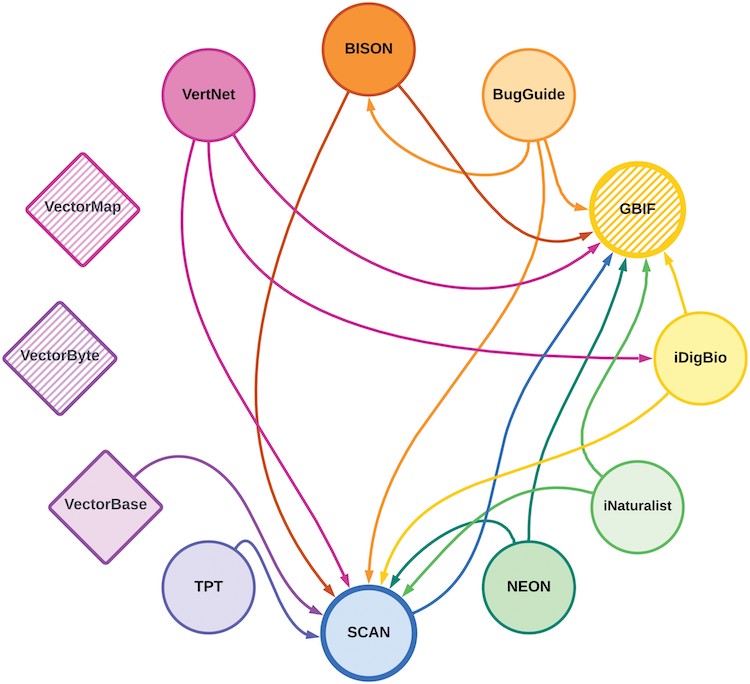
LIPPI, RYAN – Characterizing the Vector Data Ecosystem
Catherine Lippi, Samuel Rund, Sadie Ryan
Article first published online: 8 February 2023
DOI: https://doi.org/10.1093/jme/tjad009
ABSTRACT: A growing body of information on vector-borne diseases has arisen as increasing research focus has been directed towards the need for anticipating risk, optimizing surveillance, and understanding the fundamental biology of vector-borne diseases to direct control and mitigation efforts. The scope and scale of this information, in the form of data, comprising database efforts, data storage, and serving approaches, means that it is distributed across many formats and data types. Data ranges from collections records to molecular characterization, geospatial data to interactions of vectors and traits, infection experiments to field trials. New initiatives arise, often spanning the effort traditionally siloed in specific research disciplines, and other efforts wane, perhaps in response to funding declines, different research directions, or lack of sustained interest. Thusly, the world of vector data – the Vector Data Ecosystem – can become unclear in scope, and the flows of data through these various efforts can become stymied by obsolescence, or simply by gaps in access and interoperability. As increasing attention is paid to creating FAIR (Findable Accessible Interoperable, and Reusable) data, simply characterizing what is ‘out there’, and how these existing data aggregation and collection efforts interact, or interoperate with each other, is a useful exercise. This study presents a snapshot of current vector data efforts, reporting on level of accessibility, and commenting on interoperability using an illustration to track a specimen through the data ecosystem to understand where it occurs for the database efforts anticipated to describe it (or parts of its extended specimen data).
Read the full publication at the Journal of Medical Entomology.